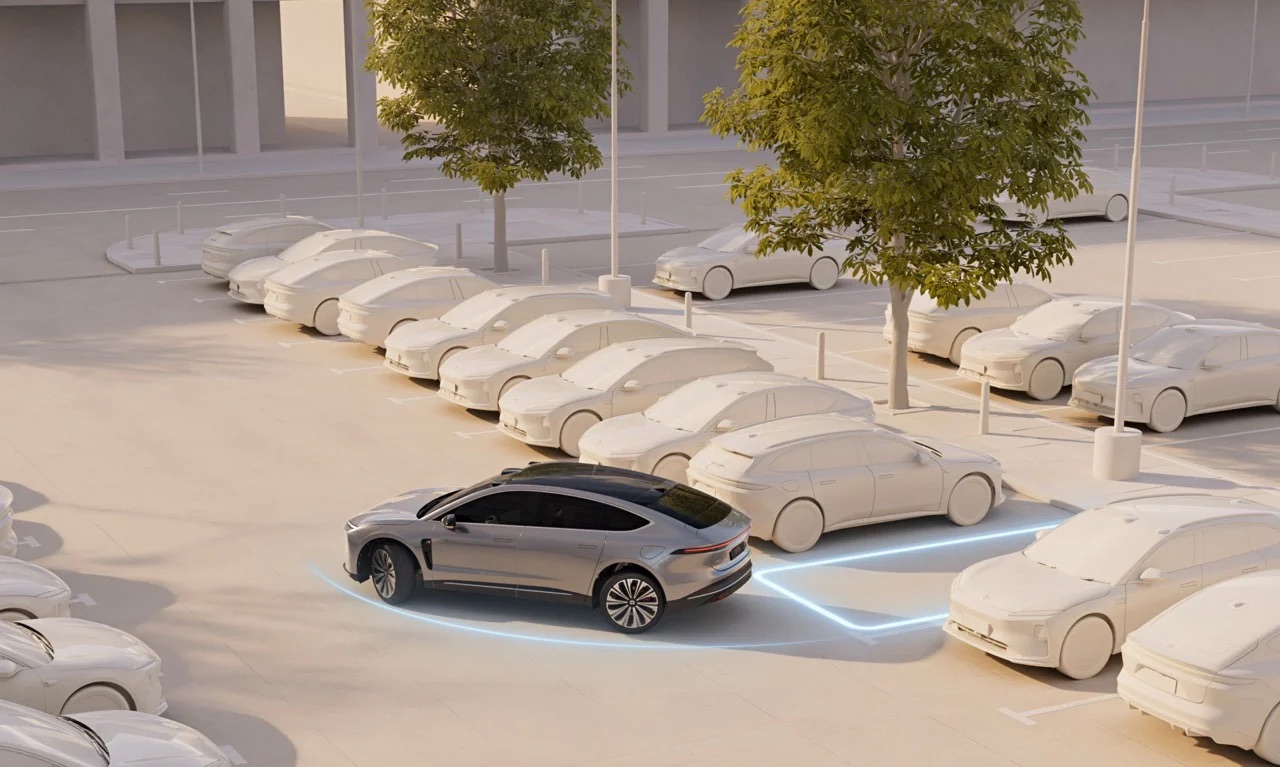
A couple of weeks ago, Volkswagen finally revealed the version of the ID. Buzz van we’ll get to purchase here in the United States. In this article, I want to discuss what we got compared to what the concept showed, and then focus on how the vehicle is still a big milestone for the industry.
The Small Downside: The Interior Wasn’t As Cool As The Concept
Sadly, some of the things that made the concept car extremely cool didn’t make it into the final version.
One of the biggest things that was missing was the interior design. The concept car came at a time when the automotive industry was a lot more optimistic about self-driving cars, and that showed. The concept had a steering wheel that could fold away and front seats that could swivel around like you’d find in a motorhome. A reconfigurable interior could make for anything from a traditional minivan layout to a rolling living room to sleeping quarters. The final version, at least from the factory, will come with a fairly normal minivan interior.
But, as you can see from this video by Out of Spec, it’s still got some pretty neat features.
The Upside: The EV Industry Enters A New Era
While the interior wasn’t as futuristic as the concept, I think there’s something we shouldn’t let get lost in the noise: its ability to serve travelers, adventurers, and nomads and the fact that the industry as a whole is getting better equipped to serve these needs.
The original Volkswagen Microbus served the needs of travelers and nomads long before “van life” became something influencers and rich kids got into. It was in fact iconic for its ability to serve people who lived on the road, whether for trips to hippy music festivals or for people to live in for months or years at a time.
But the iconic styling didn’t make it the only van to do this. Over the decades, luxury and live-in versions of all sorts of vans served in the role of the nomad-hauler. Vans of all brands were pressed into service as “conversion vans,” some built for maximum comfort and some for living in. As we all know, the pandemic-era “van life” wasn’t a new phenomenon as much as a re-branding of something that had been going on for decades, only fueled by the rise of remote work.
The EV industry initially didn’t serve this market at all, though. Given the high price of EV batteries and the need for efficiency to make smaller batteries useful, vehicle design wasn’t optimized for interior space. Cheaper EVs like the early Nissan LEAF and PHEV Chevy Volt were comfortable, and higher-end vehicles like the Model S and X were even a little roomy for people in the seats. But building something like a van would have either meant far too little range or a price tag far too high for almost anybody.
Now we’re seeing that change. Ford has the E-Transit, aimed toward serving commercial local driving needs. GM has its Brightdrop division, working on delivery vans and more. Volkswagen has now joined the ranks of the electric van companies, and has taken it to the next level with a long-wheelbase version of the vehicle for the United States (where we like everything big).
More broadly, we’re seeing the industry move beyond hyper-efficient designs and move into a broader range of utility. Business users and larger families are the obvious use cases to focus on first, but we’re seeing hints that enthusiasts in the larger vehicle classes will now start to be served.
Electric Van Life Will Arrive In Waves
If you’re trying to predict the future of electric van life (and perhaps make some money on this trend, if that’s your thing), I’ll offer some of my observations and ideas on what we’re likely to expect over time.
Given the still-high price of EVs, it doesn’t make much sense to expect college kids on an epic music festival summer road trip to buy something like the ID. Buzz. Instead, expect the early adopters of recreational electric vans to be wealthier people (and, perhaps, their college kids if mom and dad are super nice). You’ll also see people like influencers who appear to be recreational owners but in reality are using the vans to turn a profit.
The next group of recreational electric van users you’ll see are people who rent them. Stock vans, vans fitted with removable camping/glamping gear, and modified vans with things like pop tops are all starting to appear on Turo and other rental sites. Some influencers will go with this option, while many people will just be in it for fun. For the owners, it’s yet another way to profit from what looks recreational on the surface.
The next steps will come years later as the prices for used vans come down. Van lifers of progressively lower incomes will get into an electric van, and people who couldn’t afford an electric van will get one later. As prices and conditions approach rock-bottom, you’ll see worse and worse examples of electric vans, just like you see beat up old vans camping today.
Finally, you’ll see electric vans in the hands of forced nomads, also known as the homeless. If you want to see what many of today’s shiny new electric vans will be doing in 10–20 years, the best place to look is probably the nearest Walmart parking lot (assuming they allow camping like many do). While many non-homeless travelers park an RV in a Walmart parking lot for a night or two, there’s a subset of the RVs and vans that show up almost every night, perhaps switching between several Walmart locations to avoid being noticed. Today, the ICE engines are barely running and sometimes not running at all.
When EVs start serving in the role of housing the homeless, we should expect similar. By then, the electric motors and drive systems will probably still be running, but the battery packs will have lost a significant amount of their original driving range. Despite this shortcoming, they’ll likely be a much safer alternative to today’s barely-running ICE vans doing the job, and will allow people to enjoy essentials like air conditioning.
So, we can look forward to electric vans making the same journey all vehicles do. They start out under a factory warranty, and treated carefully, they slowly make their way down the market until some of them become art cars. Electric vans, serving nomads and travelers of various kinds, just have a slightly different path to follow.
Featured image by Volkswagen.
Sign up for daily news updates from CleanTechnica on email. Or follow us on Google News!
Have a tip for CleanTechnica, want to advertise, or want to suggest a guest for our CleanTech Talk podcast? Contact us here.
Former Tesla Battery Expert Leading Lyten Into New Lithium-Sulfur Battery Era — Podcast:
I don’t like paywalls. You don’t like paywalls. Who likes paywalls? Here at CleanTechnica, we implemented a limited paywall for a while, but it always felt wrong — and it was always tough to decide what we should put behind there. In theory, your most exclusive and best content goes behind a paywall. But then fewer people read it! We just don’t like paywalls, and so we’ve decided to ditch ours. Unfortunately, the media business is still a tough, cut-throat business with tiny margins. It’s a never-ending Olympic challenge to stay above water or even perhaps — gasp — grow. So …




